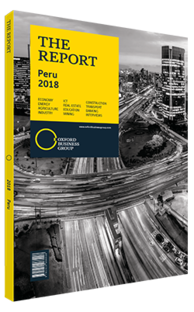Mario Campodónico, CEO, Supermarket Division, Cencosud Perú : Interview

Interview : Mario Campodónico
How did Peru achieve the highest growth in the global retail industry for 2017, and what challenges might result in the short to medium term?
MARIO CAMPODÓNICO: The development of the modern retail channel in Peru had been delayed in comparison to the rest of Latin America. Although this began to change some years ago, market penetration continues to be low. The modern channel represents 20% of retail in Peru, versus the traditional channel at 80%. As Peru develops, the middle class grows, broadening and increasing the market’s purchasing power.
Such consolidation of the middle class caused the modern retail channel to be more highly valued and sought after by the consumer. This growth can be explained by a combination of the modern middle class’ expansion together with the gap in the development of the modern retail channel.
Currently, the expectation is for the retail sector, and the modern channel in particular, to continue to consolidate in the Peruvian market, despite the informality rates that limit retail market penetration.
What are the current trends in shop formats?
CAMPODÓNICO: The range of shop formats is now wider than ever before. The traditional supermarket format is no longer the norm, making room for other formats, such as convenience stores, discounters, cash and carriers. Each of these spaces target different consumers and each have their own consumption strategy. These formats develop as they work towards gaining their own market share. This can be considered as part of the natural modernisation process of the retail industry in Peru.
What is the key to growth in provinces beyond Lima, and which shop formats are most desirable?
CAMPODÓNICO: Peru is a highly centralised country, with at least half of the economy centred in the capital. In province’s larger cities the growth of the retail industry has been occurring through malls. This is due to the fact that malls have become the main gathering and services area in the majority of secondary cities. In the context of high informality rates, malls offer an alternative to informal retail through smaller formats that compete with informal retail. The modernisation gap between Lima and the rest of the country is dwindling, meaning that developments in the sector are introduced to Lima at almost the same time as the rest of the country. Nevertheless it is important to note that high informality, deficient road infrastructure and the smaller population size of many communities in the provinces favours the development of smaller versus larger shop formats.
How will omni-channel retailing disrupt the industry, both in physical and online formats?
CAMPODÓNICO: The retail industry is rapidly changing. There are pure players venturing into physical retail, while wholesalers are enhancing their efforts to grow in the digital world. In this context, it is essential to offer customers a diversified supply of channels that include complete value propositions.
Having an omni-channel strategy enables the improvement of perishable and last-mile management – especially important in congested urban areas – and it allows brands to adapt to the rapidly changing habits of younger generations who are more likely to purchase goods online. As a result, investments in the sector are focused on developing new formats of shops, channels and technology that add services to all sales channels, while also improving management information systems and how that information is used in a market that is increasingly less loyal to brands. In fact, it is the experience during consumption that creates a link between the brand and consumers, who are increasingly demanding more value-added services. The challenge for digital shopping is to replicate the experience that physical shopping offers.
You have reached the limit of premium articles you can view for free.
Choose from the options below to purchase print or digital editions of our Reports. You can also purchase a website subscription giving you unlimited access to all of our Reports online for 12 months.
If you have already purchased this Report or have a website subscription, please login to continue.

